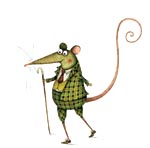Country mouse on Acute Oak Decline
Diagnosing, and treating Acute Oak Decline is a crucial skill scientists need to develop before our noble oaks fall foul of this disease


Elm trees used to stand proudly in our woods. I know this because John, who has been tending the garden here since the 1960s, remembers them, and also because we still have some in a hedgerow by the bridleway. They only ever reach about 15ft before dying back again, a reminder of the deadly powers of the sac fungi spread by its willing henchmen, the elm bark beetle family. I've become used to this cycle of tristesse, but the prospects for our oak trees are overtaking it as the number-one sylvan crisis.
Acute Oak Decline is becoming increasingly documented and its consequences could be cata-strophic for this great tree. I've become obsessed by dead branches and thinning leaf cover, but healthy oaks also go through a dying process and sparse canopies are one of the characteristics of the tree at certain stages of its life. When normal trees begin to rot on the inside, they can still live for decades, providing a mass of micro-habitats.
However, dark fluid seeping from cracks in the bark is an indication of bacteria infecting the tree. The scientists need to work out what's natural ageing and what's a species-threatening disease. A cycle of dying hedgerow saplings really would be something to cry about, and is no future for our most noble of trees.
* Subscribe to Country Life and Pay just £29.99
Exquisite houses, the beauty of Nature, and how to get the most from your life, straight to your inbox.
Country Life is unlike any other magazine: the only glossy weekly on the newsstand and the only magazine that has been guest-edited by His Majesty The King not once, but twice. It is a celebration of modern rural life and all its diverse joys and pleasures — that was first published in Queen Victoria's Diamond Jubilee year. Our eclectic mixture of witty and informative content — from the most up-to-date property news and commentary and a coveted glimpse inside some of the UK's best houses and gardens, to gardening, the arts and interior design, written by experts in their field — still cannot be found in print or online, anywhere else.
